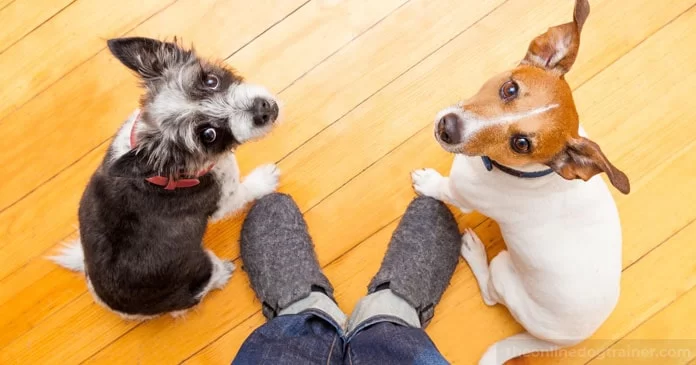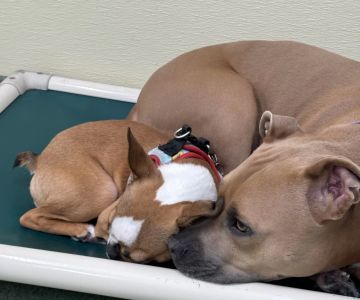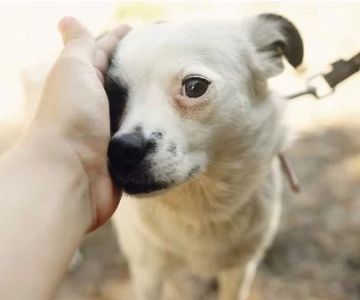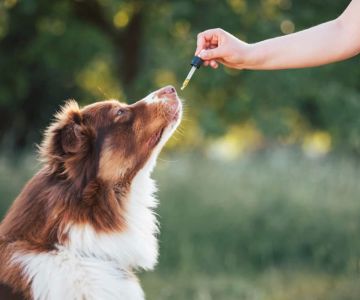When I Brought Home My Rescue Dog
I’ll never forget the first day I brought home Luna, a scruffy mixed-breed rescue with eyes that told a thousand stories. She had been through at least two shelters and possibly even worse before she found her way into my life. I expected a little nervousness. What I wasn’t prepared for was the deep anxiety that followed her every move—shaking, hiding, even growling if I moved too quickly. Helping her adjust wasn’t just about giving her food and shelter—it was about helping her feel safe for the first time in her life.
Understanding Anxiety in Rescue Dogs
Rescue dogs often carry emotional baggage from past trauma. Whether it’s abandonment, abuse, or just a lack of socialization, the result is the same: anxiety. It can manifest in various ways, including excessive barking, destructive behavior, hiding, pacing, or even aggression. In Luna’s case, it started with nonstop pacing, panting, and flinching whenever someone reached to pet her. It was heartbreaking—and I was determined to help her heal.
Why Rescue Dogs Struggle with Anxiety
Adopted dogs go through a significant transition when they leave the shelter or foster home. Everything is new—smells, people, routines, even the sound of the TV. For dogs who’ve experienced neglect or abuse, every new sound or movement might feel like a threat. Luna had likely lived most of her life without stability or kindness. Her brain was wired for survival, not for calm.
There are common triggers for anxiety in rescue dogs, including:
- Being left alone (separation anxiety)
- Loud noises like fireworks or thunderstorms
- Sudden movements or unfamiliar men
- Confinement or being touched unexpectedly
- Overstimulation in new environments
Practical Ways to Ease Anxiety in Rescue Dogs
Helping an anxious rescue dog doesn’t happen overnight. It takes consistency, empathy, and patience. I had to try multiple approaches before I found what worked for Luna. Here’s what helped us the most—and might help your dog too.
1. Establish a Calm and Predictable Routine
One of the first things I did was establish a daily routine for Luna—same wake-up time, same walking schedule, same feeding time. Rescue dogs often come from chaotic backgrounds, so structure creates safety. After a couple of weeks, Luna began anticipating her walks and would wait by the door rather than pacing anxiously around the house. That consistency gave her a sense of control in an otherwise unpredictable world.
2. Create a Safe Space
I made a quiet corner in my living room into Luna’s designated safe zone. It had a soft bed, a few of her favorite toys, and no foot traffic. She would retreat there whenever she felt overwhelmed. Having that sanctuary allowed her to recharge without pressure. Over time, she started choosing to be around me more rather than hiding in her corner. For anxious rescue dogs, a safe space is essential—not as a punishment, but as a comfort zone.
3. Use Calming Tools and Products
There are some truly helpful tools out there designed to ease dog anxiety. I tried a pheromone diffuser that mimicked the calming hormones of nursing dogs. It made a noticeable difference in Luna’s stress levels during storms. Other options include calming collars, thundershirts, or even anxiety wraps. These tools aren’t magic fixes, but when paired with behavior training, they can really help.
4. Practice Positive Reinforcement
Luna didn’t respond well to scolding or loud corrections—which makes sense for a dog with a traumatic past. Instead, I focused on praising her when she showed calm behaviors. For example, if she chose to sit quietly while a new person entered the room, she got a treat and soft praise. It didn’t take long before she realized that calm behavior led to positive outcomes. Over time, those small wins added up.
5. Start Basic Obedience Training
Training builds confidence and structure. I started with simple commands like “sit” and “stay,” using only positive reinforcement. This helped Luna feel more in control and helped me communicate with her more clearly. It wasn’t just about obedience—it was about building trust. Rescue dogs, in particular, thrive on clear, consistent communication. With every successful command, Luna grew more confident and less anxious.
6. Gradually Expose to Triggers
When Luna first arrived, she was terrified of men. I couldn’t figure it out until my brother came over, and she panicked. Instead of forcing interaction, I introduced her to calm, gentle men in a controlled way. One of my friends would toss her treats from a distance and let her approach on her own terms. Slowly, she began associating men with good things instead of fear. Exposure therapy must be slow and on the dog’s terms—never force it.
7. Mental Stimulation Is Just as Important
Anxiety often comes from excess energy or boredom. I incorporated brain games into Luna’s daily routine—treat puzzles, hide-and-seek, and sniff walks. These activities helped burn mental energy and kept her occupied in a healthy way. The more engaged her mind was, the less time she spent feeling anxious.
8. Know When to Get Professional Help
Despite all my efforts, Luna still had days when her anxiety seemed overwhelming. That’s when I reached out to a certified canine behaviorist who specialized in rescue dogs. She helped tailor a specific plan for Luna and introduced behavior modification techniques I hadn’t considered. In some cases, medication may be necessary—but that decision should always be made with a trusted veterinarian or veterinary behaviorist.
My Life Now with Luna
Today, Luna is a different dog. She still has her quirks—loud noises still make her jump—but she no longer lives in fear. She plays fetch at the park, greets neighbors calmly, and even cuddles on the couch with me. The journey wasn’t fast, but it was worth every moment. If you're helping a rescue dog work through anxiety, know this: patience and love truly do work wonders. Every small victory adds up to a better life—for both you and your dog.
If you're on this journey with your own rescue dog, I encourage you to keep going. Healing takes time, but it's possible. And if you're not sure where to start, professionals like the team at Hidden Brook Veterinary can help guide the way with compassion and experience tailored to your dog’s needs.












